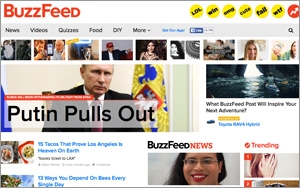 Publishers are increasingly relying on email marketing to recruit readers to their Web sites, and new research from The Relevancy Group reveals that 41% of publishers use email marketing to drive
more than a quarter of their total revenue.
Publishers are increasingly relying on email marketing to recruit readers to their Web sites, and new research from The Relevancy Group reveals that 41% of publishers use email marketing to drive
more than a quarter of their total revenue.
Revenue generated by email in the publishing industry is almost twice the average for general marketers, according to the study. Twenty-four percent
of marketers attributed email to driving more than a quarter of overall revenue -- significantly lower that the publishing industry’s 41%.
The publishing industry also sees higher email
engagement rates. Seventy-six percent of marketers responded that they saw open rates north of 20%, while 80% of marketers in the publishing industry said the same.
“Email marketing is
being relied on more heavily today than ever before, and the data indicates that publishers depend on it even more than most,” says Nicholas Einstein, vice president of research and principal
analyst at The Relevancy Group.
advertisement
advertisement
The study was sponsored by PostUp,
an email service provider, and surveyed more than 400 executive marketers in winter 2015.
The research also mirrors successful publishing email case studies by Campaign Monitor, an email
marketing company,
Kraig Swensrud, CMO at Campaign Monitor, says that email newsletters are one of the five top traffic drivers to Buzzfeed.com, which has been working with Campaign Monitor
for three years.
“What’s really interesting about BuzzFeed is that they’ve taken it to a whole new extreme,” says Swensrud. “It’s amazing to see how
they’ve grown -- they’re a big pioneer in leveraging emails in the publishing industry.”
BuzzFeed now offers a dozen email newsletters, varying from daily inbox news updates to more targeted content, such as its “Dude A Day” and “Dog A Day”
newsletters.
Although BuzzFeed was unable to provide specific ROI data points on email’s success to their business, Swensrud confirms that the media company uses Google Analytics
to analyze how channels and campaigns are performing, and that email has become a crux of readership engagement for the media company.
BuzzFeed has an average of more than 10 million global
visitors a day, per Quantcast.
Swensrud relays how email marketing is becoming more and common in the media industry as publishers turn to new ways to continuously stay in touch with their
readers.
Additional publishing companies leveraging Campaign Monitor’s email marketing platform include VICE Media and Reddit.
“Publishers, who rely on email even more than
others, have specialized requirements, and often need to leverage different strategies, tactics, and tools to drive their core business objectives,” says Einstein. “Those who allocate
resources on six key areas of focus will be well positioned to take advantage of the tremendous opportunities that channel proliferation, and the current evolution towards distributed content,
currently present.”
Einstein recommends that publishers focus on the following six areas to optimize their email marketing campaigns: optimizing at the top of the funnel, showcasing
highly relevant content, operating mobile-first, A/B testing, multichannel integration and identifying and leveraging key market influencers.